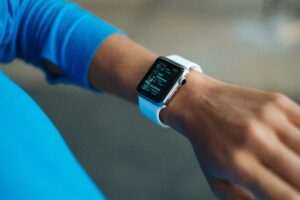Apple’s Race to Tweak Software Ahead of the Looming US Watch Ban
Apple Inc., a global tech giant revered for innovation and groundbreaking technology, faces an unprecedented challenge with the impending US ban on its smartwatches. In this article, we delve into the intricate details of Apple’s endeavor to resolve the patent dispute with Masimo Corp, exploring the pivotal strategies and technical adaptations undertaken to circumvent this imminent hurdle.
The High-Stakes Patent Dispute
The genesis of this critical juncture for Apple lies in the patent dispute with Masimo Corp, leading to a looming ban on its smartwatches in the US. With a staggering $17 billion business hanging in the balance, Apple’s engineers are tirelessly focused on tweaking the smartwatch algorithms. The primary goal? Mitigate the patent infringement allegations by reconfiguring the technology’s oxygen saturation measurement and data presentation.
Exploring Multifaceted Solutions
Apple adopts a multi-pronged approach encompassing legal and technical avenues to mitigate the ban’s impact. Initiatives such as rebranding retail strategies by replacing prohibited models with lower-end variants and planning cessation of sales by December 24th signify their proactive stance. Despite the ban’s imminent threat, Apple’s stock shows resilience, reflecting investor confidence in the company’s ability to navigate this adversity.
Navigating the Software Fix Conundrum
However, Masimo Corp. contends that solely addressing the issue through software tweaks is inadequate. They assert that hardware modifications are imperative, adding complexity to Apple’s resolution efforts. The ban’s focus on import restrictions impedes direct sales, emphasizing the significance of the software’s role in device functionality. Apple contends that software alterations sufficiently address Masimo’s patent claims.
Complexities in Implementation
The journey from conceptualization to implementation of software changes warrants meticulous testing. Apple’s stringent internal testing protocol ensures alterations won’t compromise other smartwatch functionalities. Given their medical implications, the adjustments necessitate exhaustive scrutiny, potentially prolonging the release process. In case hardware revisions are mandatory, production and shipment could extend to three months.
Impact on Key Features and Sales
The blood oxygen feature, pivotal for health monitoring, faces jeopardy with potential bans affecting the Series 7 and Series 8 models. This feature, critical during the pandemic, holds immense medical value for assessing patients’ respiratory health. Potential sales halts underscore the stakes involved, impacting user access to advanced health monitoring technology.
Scope Beyond Direct Sales Channels
Notably, the ban only restricts Apple’s direct sales avenues, allowing third-party retailers like Walmart and Best Buy to continue offering the device. Both retail giants confirmed their uninterrupted sale plans, showcasing the ban’s limited scope.
The Hope for a Last-Minute Intervention
With the ban looming, Apple pins its hopes on a White House intervention, seeking a veto akin to the iPhone’s scenario in 2013. US Trade Representative Katherine Tai holds the pivotal decision-making power, navigating a complex scenario involving two US entities, Apple and Masimo.
Conclusion: A Developing Saga
As the ban’s countdown continues, the saga between Apple and Masimo unfolds, highlighting the intricate interplay of legal, technical, and governmental dynamics. Stay tuned for evolving updates on this narrative shaping Apple’s smartwatch trajectory.
In conclusion, Apple’s relentless pursuit of innovative solutions amidst adversity underscores its commitment to technological excellence. Subscribe to stay abreast of this developing story, where each update unravels a new chapter in Apple’s quest for resolution.
FAQs on Apple’s Smartwatch Dilemma:
1. What led to the US ban on Apple’s smartwatches?
The ban stems from a patent dispute between Apple Inc. and Masimo Corp, focusing on alleged patent infringement related to smartwatch technology, particularly in oxygen saturation measurement.
2. How is Apple addressing the impending ban?
Apple is actively tweaking the smartwatch algorithms, specifically focusing on the technology’s oxygen saturation measurements to align with Masimo Corp’s patent claims and avoid the ban’s adverse impacts.
3. Will this ban affect Apple’s revenue significantly?
Given that the smartwatch business contributes approximately $17 billion to Apple’s revenue, the ban poses a substantial challenge. However, the company’s proactive approach aims to mitigate the impact.
4. Can Apple resolve this issue solely with software fixes?
While Apple aims to address the patent dispute primarily through software tweaks, Masimo Corp insists that hardware modifications are essential, adding complexity to the resolution process.
5. What measures is Apple taking to comply with the ban?
Apple is rebranding its retail strategies, replacing banned models with lower-end variants, and planning to halt sales of the prohibited watches by December 24th to align with the ban’s regulations.
6. How is the ban expected to impact smartwatch features like blood oxygen monitoring?
The ban’s potential impact on key features like blood oxygen monitoring could affect the Series 7 and Series 8 models, impacting users’ access to vital health monitoring features.
7. What role does the White House play in this situation?
The White House has the authority to intervene and potentially veto the ban, a decision that rests with the US Trade Representative Katherine Tai, who reviews the dispute’s multifaceted aspects.
8. Will third-party retailers stop selling Apple’s smartwatches?
No, the ban only restricts Apple’s direct sales channels, allowing third-party retailers like Walmart and Best Buy to continue offering the device, as confirmed by both retailers.
9. How long will it take for Apple to implement necessary changes?
Bringing about required software modifications entails extensive internal testing to avoid disrupting other smartwatch functions, potentially prolonging the release process.
10. What implications does this dispute hold for the tech industry?
This dispute underscores the intricate interplay between legal, technical, and governmental dynamics in the tech industry, showcasing the impact of patent conflicts on innovation and market accessibility.
Tags:
Apple Inc, smartwatches, US ban, patent dispute, technology news, revenue streams, software tweaks, hardware changes, blood oxygen feature, White House intervention











